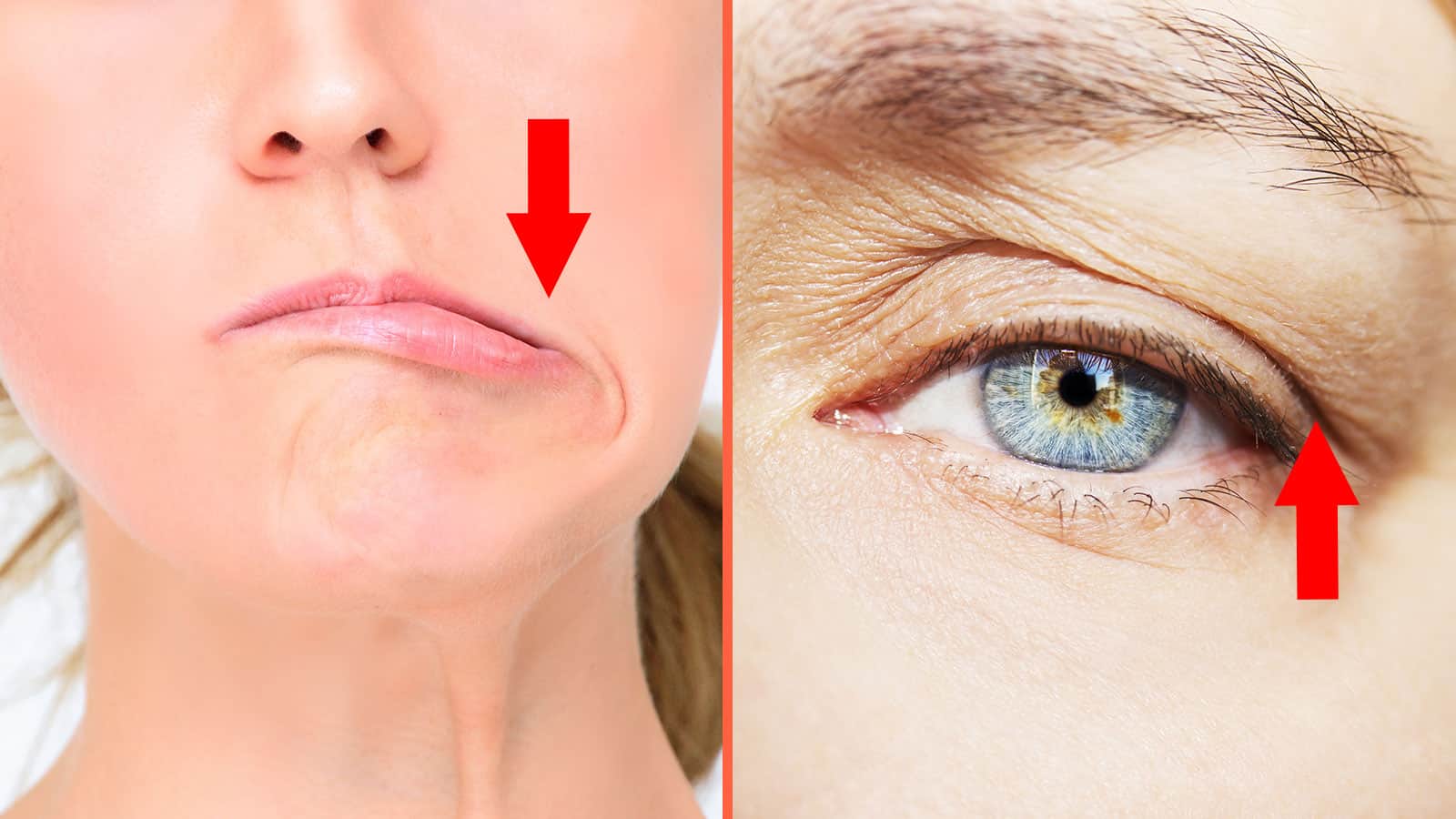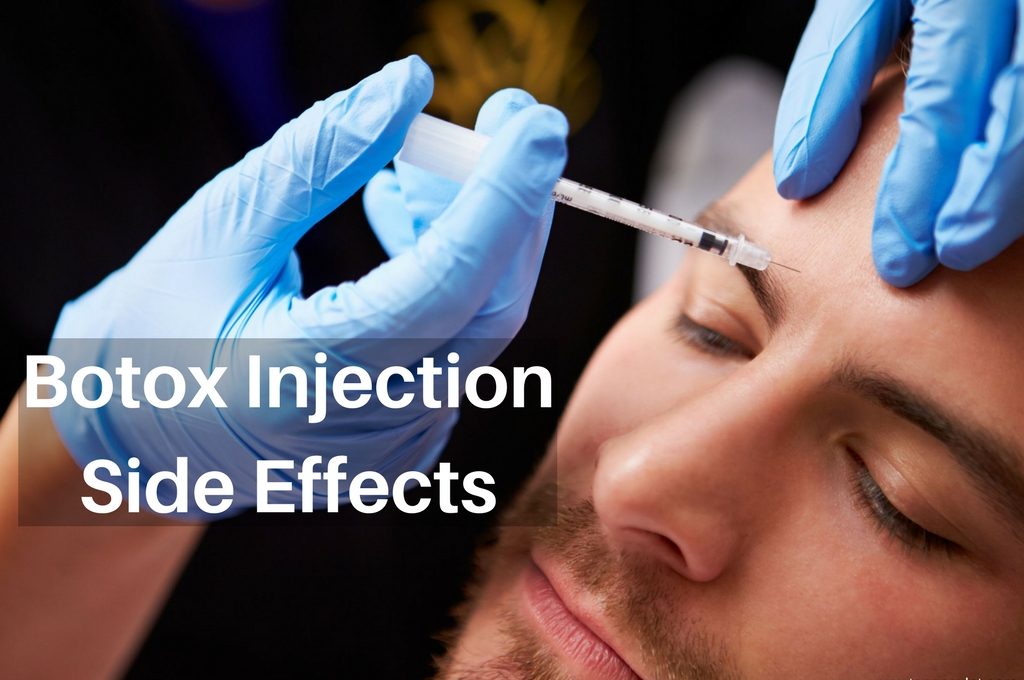Botox safety are major concerns, but overall these procedure are safe. Injections are quickly becoming the most popular way to combat common signs of aging on the face. While getting rid of wrinkles and lines is attractive enough to get most people into the plastic surgeon’s chair, there are some possible side effects every consumer needs to be aware of. The good news is that Botox only stays in the body for six months or less, and the side effects will wear off at that time as well, if they even last that long. The biggest Botox side effect that concerns most patients is bruising. Botox is usually injected into sensitive muscles on the face or neck, and no one wants obvious bruising in those areas, temporary or not. Other possible Botox side effects include some tenderness or numbness around the injection site, headaches, drooping in the eyelid for short period of time, or other symptoms similar to a case of the flu. Eyelid droop sounds serious, but it is a temporary problem that only happens with about 1% of patients. Botox works by paralyzing the muscles that are injected temporarily. When that spreads to surrounding muscles such as the eyelids, those muscles also freeze which causes the drooping. Botox safety is well documented, but this will sometimes happen with other muscles in the face besides the eyelids as well. Immediately after having the injections, some patients will experience redness in the skin (erythema), tenderness or pain around the area of the injections, or some weakness in the face muscles. Within a week all of these effects will fade away, if they occur at all. Patients must realize that Botox is a medication and can interact with other medications once in the body. That makes it very important that patients make their doctor or surgeon aware of any medications they are taking, including over the counter medications and vitamins. Any type of medication could potentially interact with the Botox, but there are some that are known to cause Botox side effects and Botox safety issues. Antibiotics like gentamicin, tobramycin, clindamycin and lincomycin have been shown to cause problems, as well as some medications commonly used for patients with heart problems, including quinidine. Common medications for myasthenia gravis, ALS and Alzheimer’s disease may also interfere with the injections. If you are taking any variety of non-prescription drug, including multivitamins, it is best to stop taking them at least ten days before having the injections. You should also make the doctor aware of what you are taking so you can be informed on which ones not to take while the Botox is active in your body. Just as undergoing any other medical procedure, patients must inform the surgeon of any medical issues or allergies to medications prior to having the injections to reduce botox safety issues.
Botox Safety- Specific Side Effects of Botox Some patients may be at a higher risk of experiencing Botox side effects than others. The presence of any of the following may elevate risk and increase concern for Botox safety:

* Potential allergies to Botox ingredients
* Pre-existing infections in the area to be injected
* Cardiovascular problems
* Neuromuscular disorders During the initial consultation with a knowledgeable physician or plastic surgeon, all allergies and medical conditions should be discussed. The doctor can then determine whether Botox injections are safe for each individual. Side effects of Botox are more likely in some than others. This drastically reduces the chances of experiencing unexpected Botox side effects. Are you concerned with the worry or frown lines creasing your face? If so, you are not alone. People all over the world are becoming more and more interested in eliminating the signs of aging across the face and neckline, which has led to the popularity of Botox injections. Botox is actually a shortened name for bacteria clostridium botulinum. This is the toxin that leads to botulism in the human body, but it is a purified form that is harmless in the small doses used for the procedure. A certified plastic surgeon with experience giving Botox injections can give the injections at regular intervals in time to smooth out wrinkles and age lines on the face and neck. The result is a glowing youthful appearance and a reduced likelyhood of side effects of Botox..
Common areas to be treated with Botox injections include:
* Forehead
* Mouth Corners
* Around Eyes
These areas are affected by the side effects of Botox. The smoother skin can be seen fully within a few days of having the injections and will last for around four months. The exact period of time before injections start to wear off will vary depending on the area treated and individual’s skin. In general, patients can plan on having follow-up injections four to five months later. Most people will experience little to no side effects from Botox injections, but others may experience one or more of the following:
* Numbness or tenderness in area of injection
* Minor swelling
* Burning sensation during the procedure
* Headache
* Nausea
These side effects of Botox are still rare. If these symptoms occur they are temporary and pass rather quickly once the procedure is over. As long as the procedure is performed by a board certified physician with experience and proper procedures are followed, Botox is a safe and quick procedure with a big pay off. One last possible side effect is bruising. This is a possibility anytime you are inserting needles into sensitive facial muscles, but there are ways to reduce the risk of it occurring. For increased Botox safety, ten days before the Botox injections are to be received, patients should stop taking all forms of daily vitamins, Vitamin E, St. John’s War, and any type of anti-inflammatory medication. All of these in the body will increase the risk of bruising. If pain is a serious concern, over the counter pain medication is safe to take an hour to half hour before the procedure. Some physicians may have a preference to the type of pain medication taken. Minimize the potential for side effects of Botox by finding a great doctor. According to reputable professionals in the field, such as the American Society for Aesthetic Plastic Surgery, Botox injections are completely safe as long as the patient is not pregnant or breastfeeding. Millions of people have been treated over the past few years with no serious side effects reported, given the they are received from board certified plastic surgeon’s in a medical setting. If you are concerned with the signs of aging on your face and more invasive plastic surgery is out of your reach or comfort zone, this is a fast, affordable option to consider. Botox Safety – Avoiding Side Effects Botox safety is a concern? Botox is a medication also known as Botulinum Toxin type A. This is essentially a modern day muscle relaxer that was derived from the deadly botulism bacterium discovered in contaminated meat years ago. The side effects of botox can be reduced. While undiluted this is a toxin to the human body, it is safe to use in small doses in this diluted, purified form. When injected directly into human muscles it can actually treat a variety of conditions caused by overactive muscles. Today, the most well known use for Botox is to reduce the appearance of fine lines and wrinkles on the face, especially between the eyebrows. To reduce the chances of the side effects of Botox, the Botox injections are preferable to oral medications because the results are quicker to set in and last much longer. After a ten minute procedure, patients walk away with very little to no side effects or recovery time. The results are apparent within a few days and can last as long as four months. Botox essentially paralyzes the muscles, thus controlling the contractions that often lead to the appearance of lines and wrinkles. This is a non-invasive, non-surgical procedure that has been FDA approved for certain areas of the face. It is actually the only approved procedure of its kind. Millions of people undergo this procedure every year with very minor to no side effects. Yet, there are some groups of people who are at greater risk for complications, the side effects of Botox and are therefore less likely to be approved for the procedure by an experienced surgeon.

This includes anyone with the following:
* Anyone with an infection in the area to be injected
* Anyone allergic to Botox ingredients (including eggs)
* Anyone with a neurological disorder, including Lou Gehrig’s disease
* Anyone with cardiovascular disease.
* Anyone with a neuromuscular disease.
Those suffering from a neuromuscular disease are at serious risk of cardiovascular problems during or after receiving Botox injections. Side effects of botox are a real but rare issue. Any medical condition or history of medical problems should be revealed during the original consultation with a board certified physician or plastic surgeon. Any woman who may be pregnant or who is still breastfeeding should avoid this procedure as well. The recommended age range is 18 to 65. Considering Botox injections is no different than going to a doctor to discuss any other type of medication that may improve your life. You have to go to an experienced professional and reveal all of your concerns and medical history. You will then be accepted or denied as a qualified patient for the procedure.

